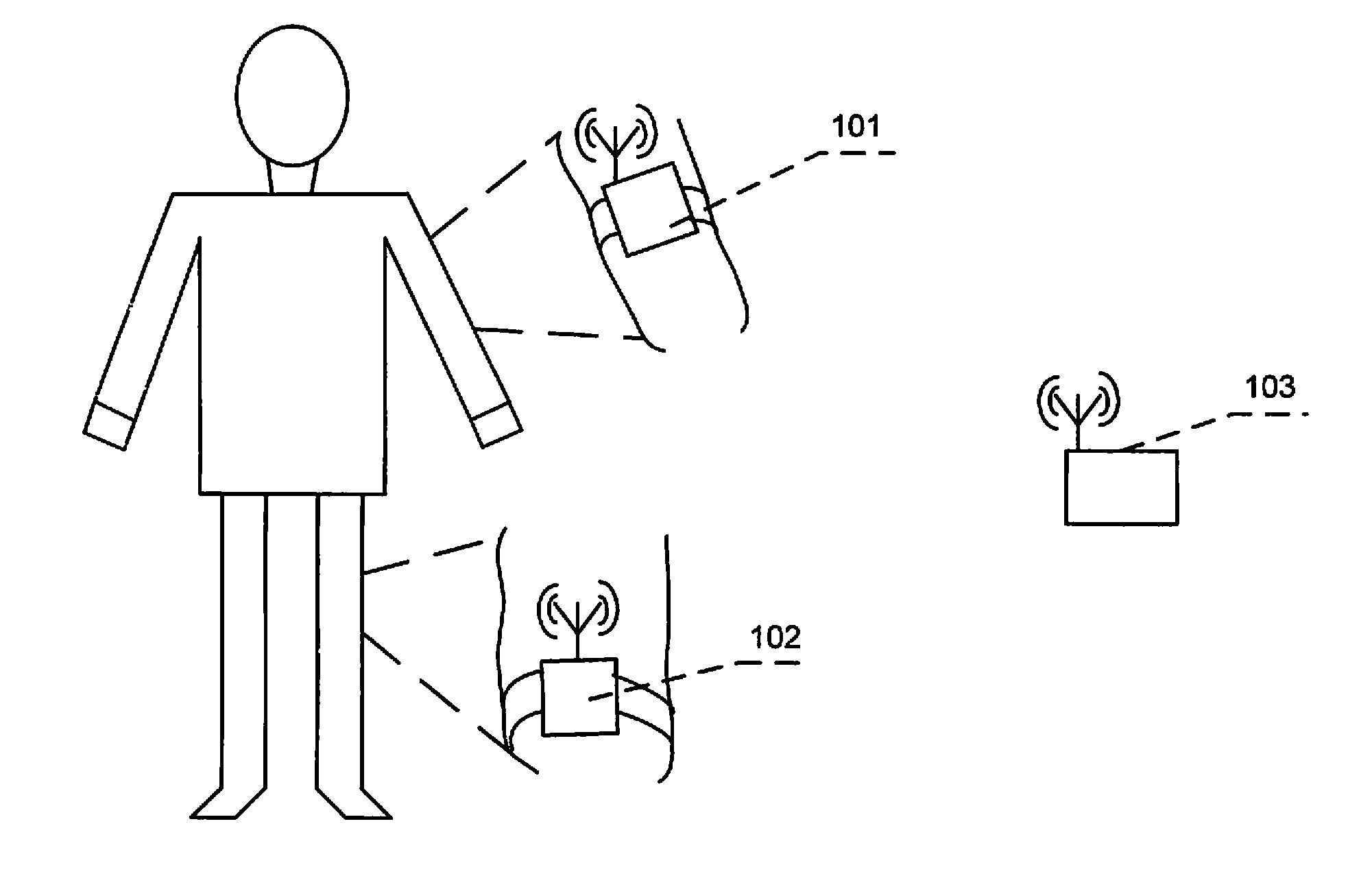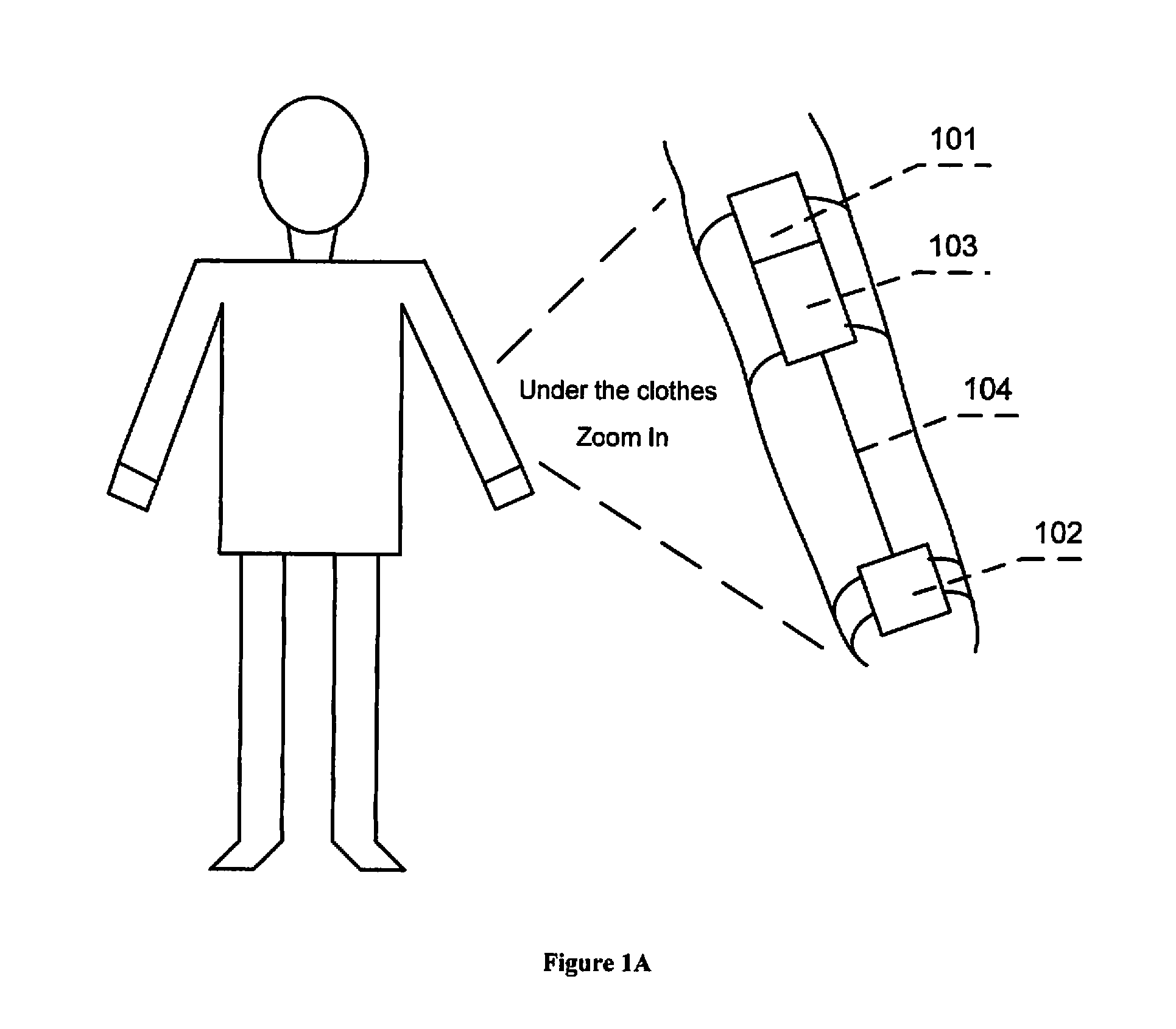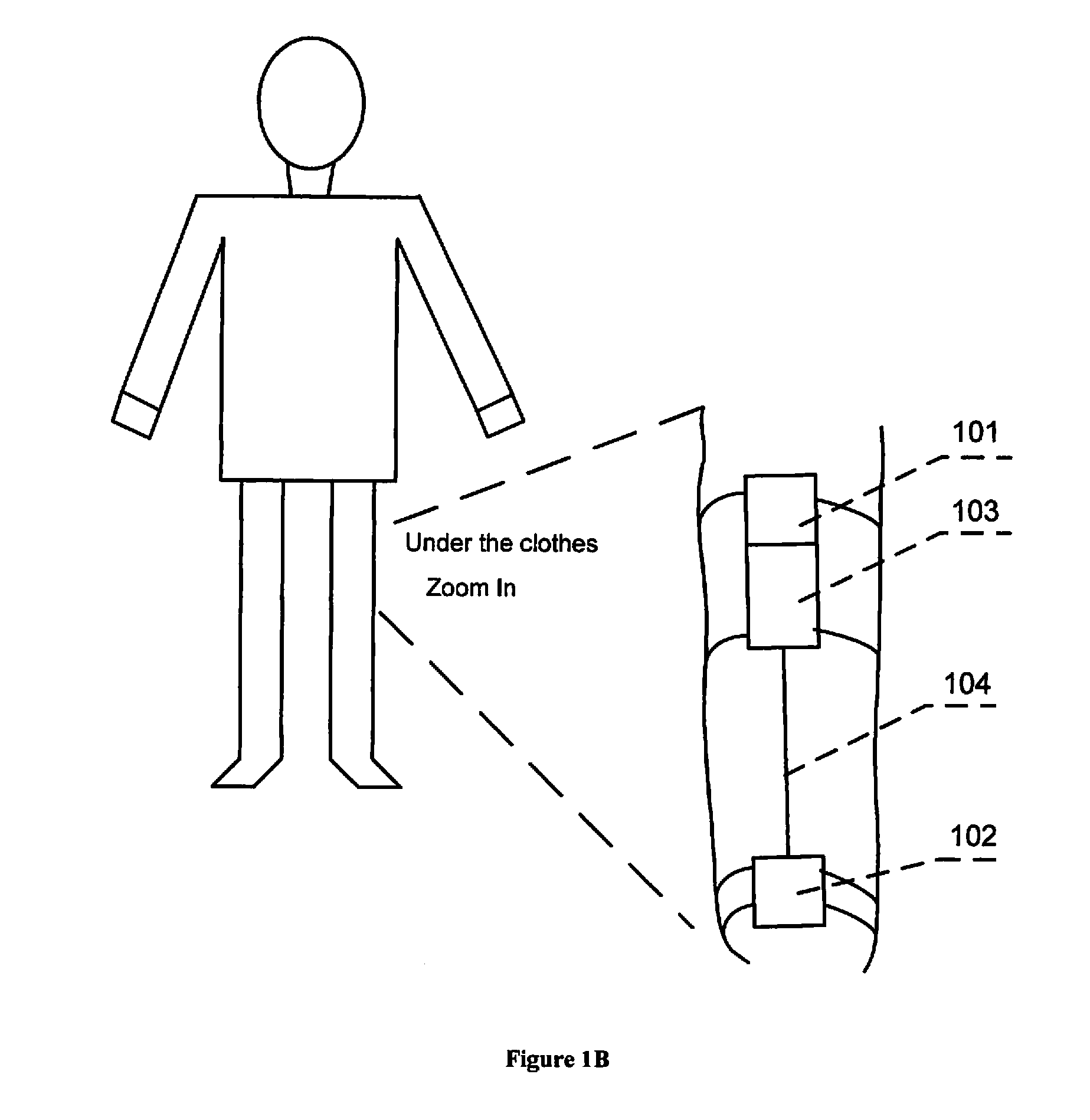Metod and continuously wearable noninvasive apparatus for automatically detecting a stroke and other abnormal health conditions
a technology of automatic detection and wearable equipment, which is applied in the direction of catheters, angiography, applications, etc., can solve the problems of increasing the risk of brain bleeding, requiring prompt treatment, and requiring tremendous financial costs for our society, so as to achieve non-invasive, continuous wearable, and simple operation
- Summary
- Abstract
- Description
- Claims
- Application Information
AI Technical Summary
Benefits of technology
Problems solved by technology
Method used
Image
Examples
Embodiment Construction
[0050]FIG. 1A shows a high risk person wearing the device on his arm. A zoomed illustration of the device is shown on the right side. The device includes a first sensor unit 101 and a second sensor unit 102. In the illustrative diagram, the sensing unit 101 is directly attached to the processor 103 while the sensor unit 102 connects to the unit 103 via cable 104. The processor 103 processes the signals received from the sensor unit 101 and 102. The unit 103 performs the arithmetic calculations and indicates when a stroke's onset occurs. The processor 103 comprises one or more of a microprocessor, microcontroller, digital signal processor (DSP), application specific integrated circuit (ASIC), field programmable gate array (FPGA) or other programmable electronic components. The processor 103 also includes a software program to execute the intended functions. The device is worn on the arm under the clothes and would not interfere with the normal daily activities such as sit, walk, slee...
PUM
 Login to View More
Login to View More Abstract
Description
Claims
Application Information
 Login to View More
Login to View More - R&D
- Intellectual Property
- Life Sciences
- Materials
- Tech Scout
- Unparalleled Data Quality
- Higher Quality Content
- 60% Fewer Hallucinations
Browse by: Latest US Patents, China's latest patents, Technical Efficacy Thesaurus, Application Domain, Technology Topic, Popular Technical Reports.
© 2025 PatSnap. All rights reserved.Legal|Privacy policy|Modern Slavery Act Transparency Statement|Sitemap|About US| Contact US: help@patsnap.com



